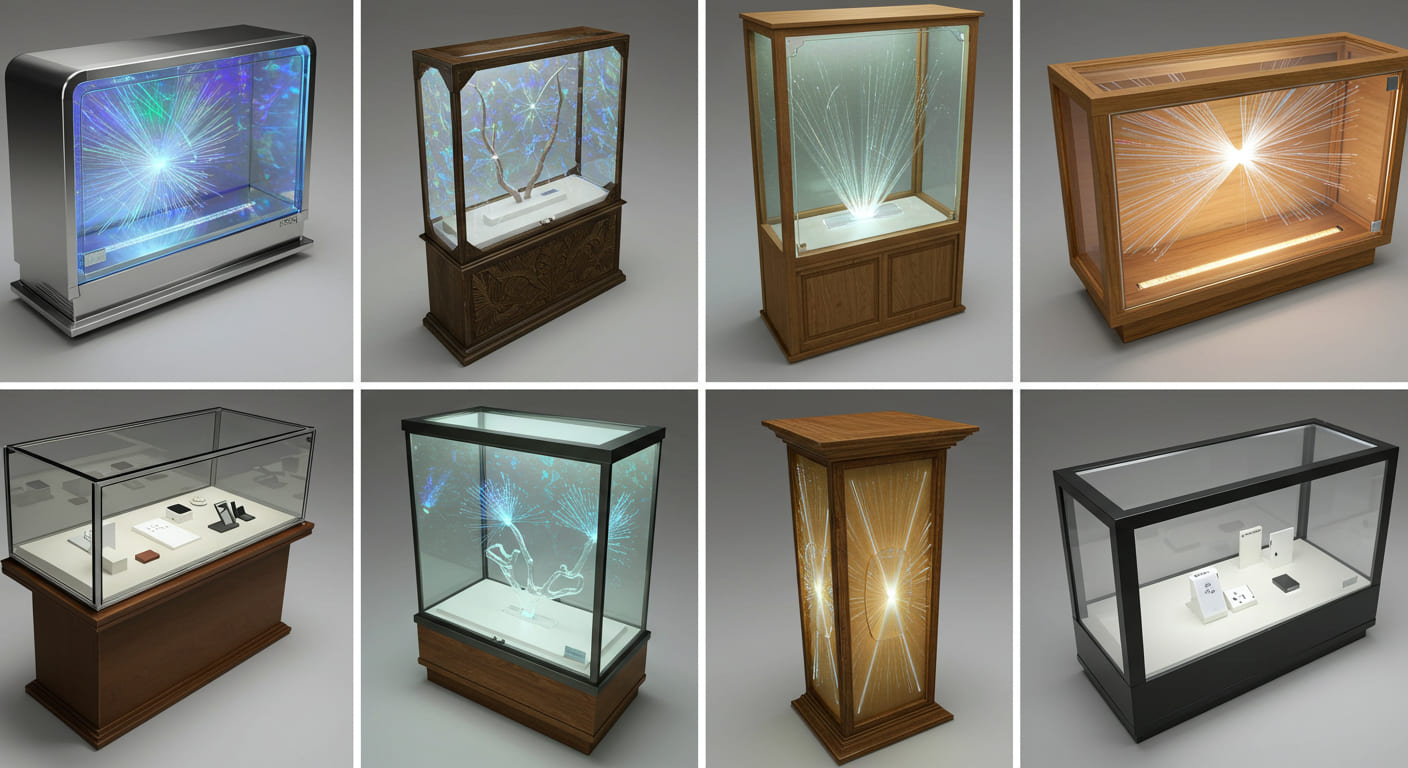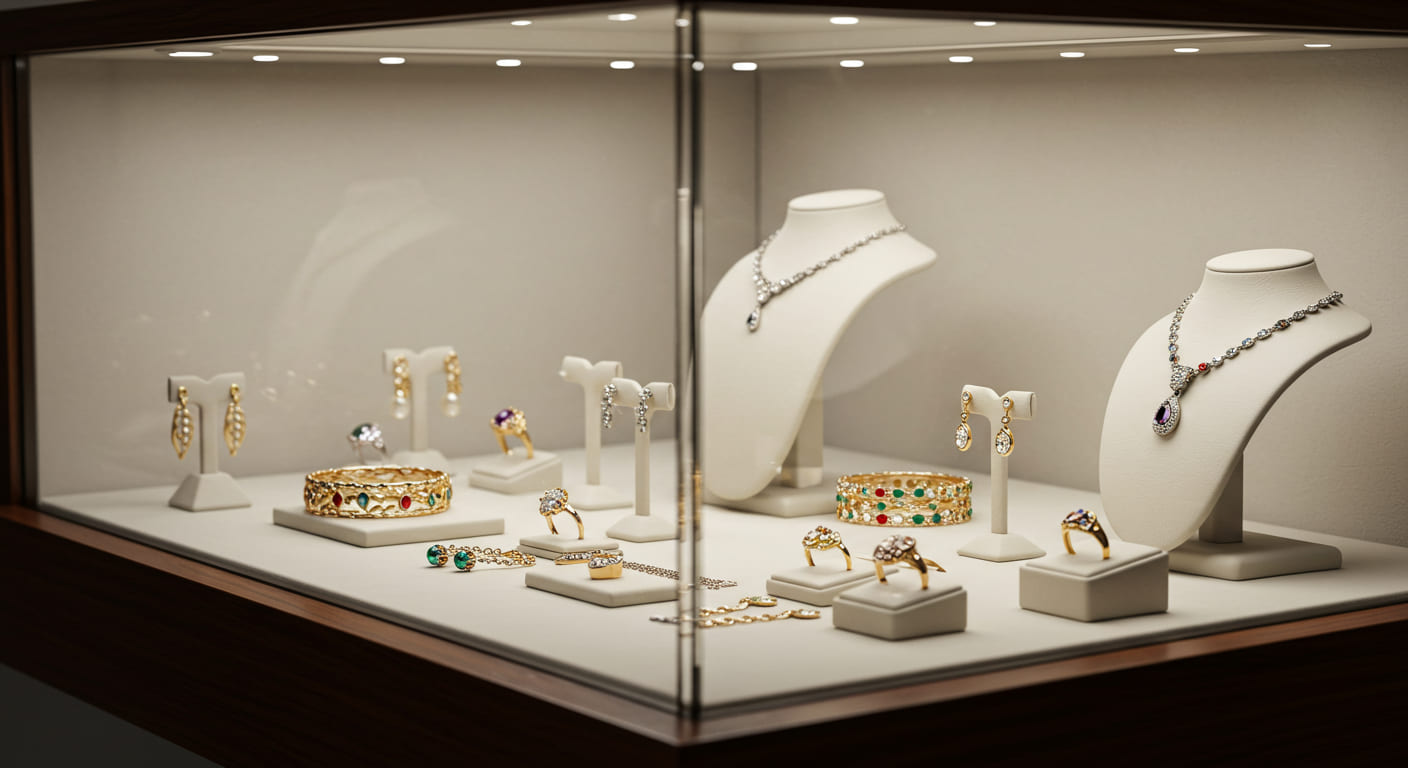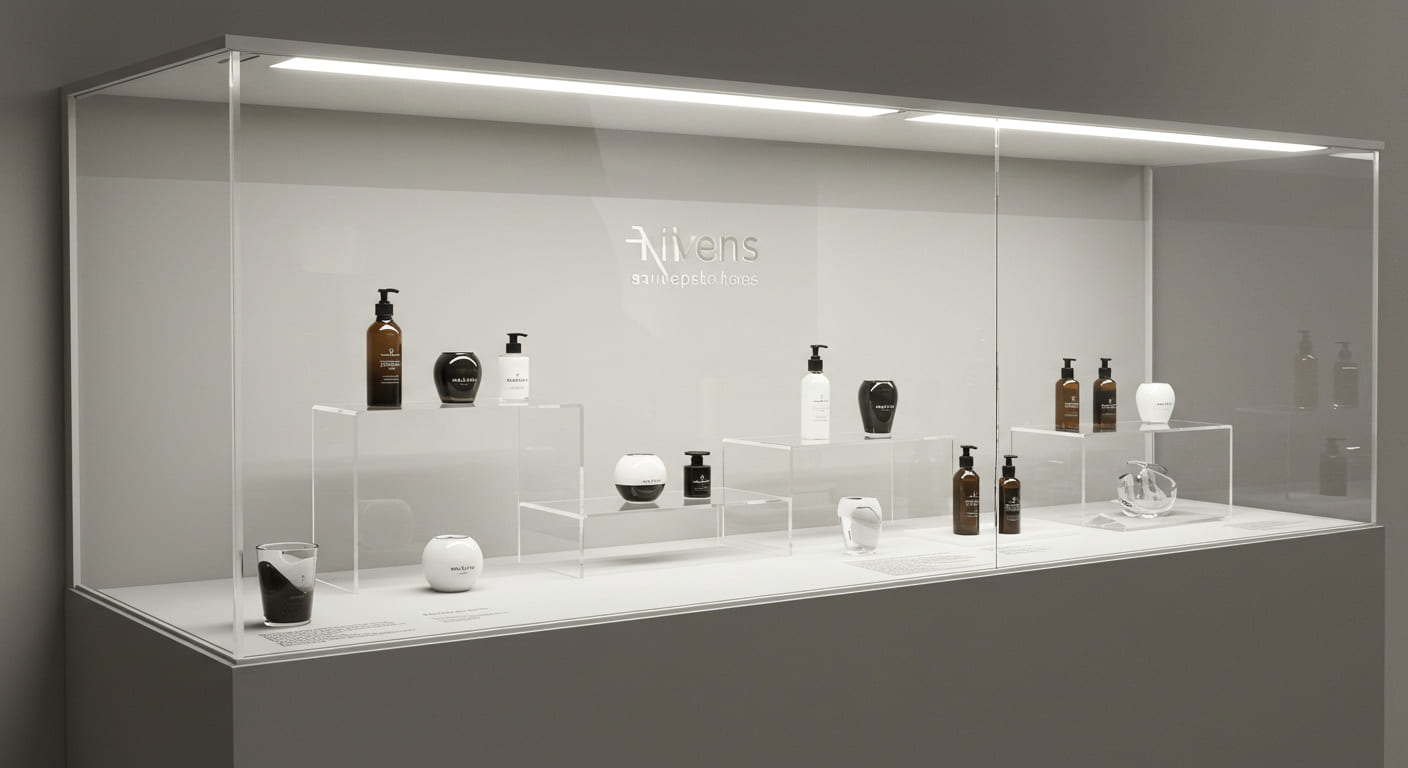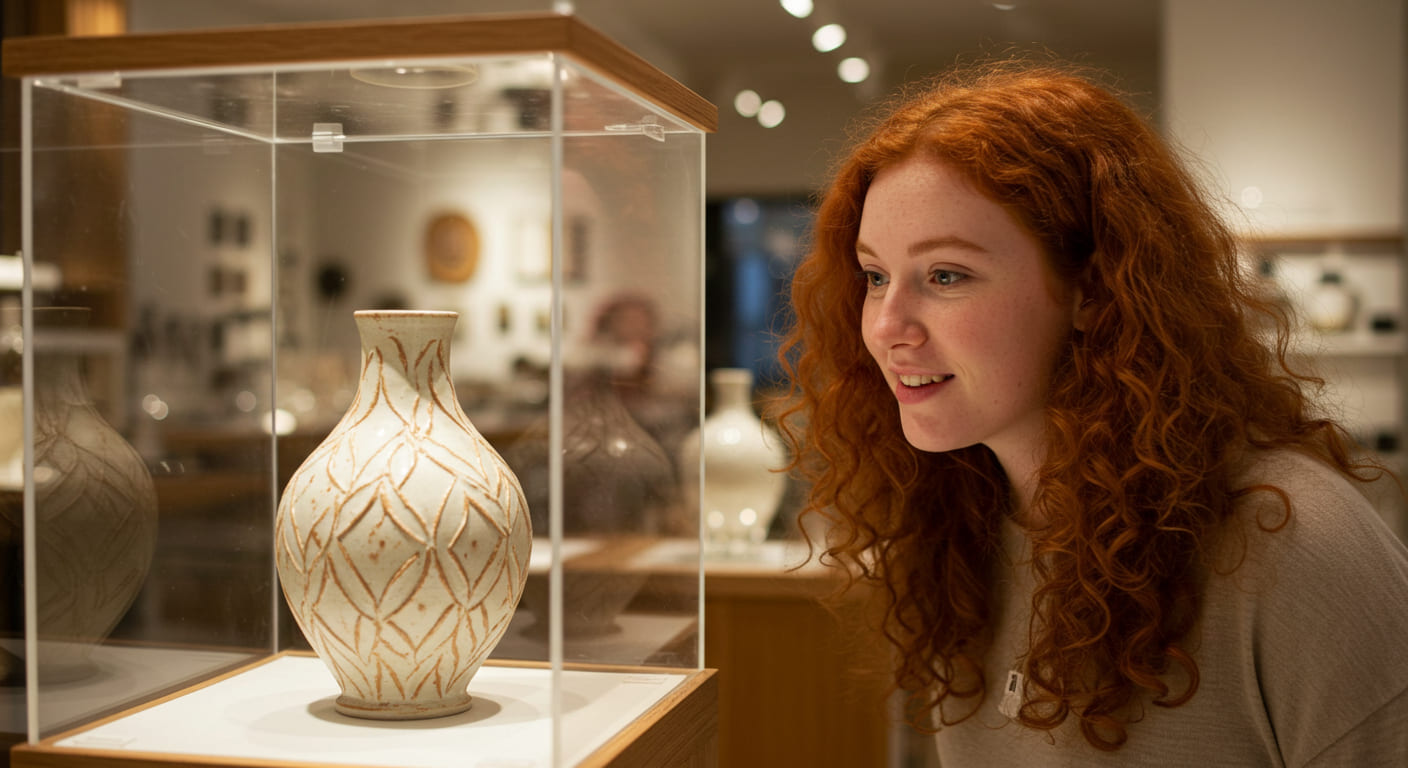
What Are Some Ideas for Display Cases?
Are your most valuable products sitting in boring, standard glass boxes? This makes your best items look common and uninteresting, failing to create any excitement for your customers.
Great display case ideas1 go beyond the basic box. They use creative materials2, integrated lighting, and unique shapes to frame your product like a piece of art, making it look exclusive and desirable.

As the owner of a factory that builds custom fixtures, I’ve seen it all. I’ve helped designers like Mark turn a simple need for a "case" into a powerful branding statement. A display case shouldn’t just be a security measure; it should be a centerpiece. It’s an opportunity to stop a customer in their tracks and make them look closer. Let’s explore some ideas to make your cases work harder for you.
What can I put in a display case?
Are you unsure which products deserve a special showcase? Putting the wrong items behind glass can waste valuable retail space and miss a key opportunity to highlight your stars.
You should put high-value, fragile, or unique feature items1 in a display case2. This includes things like jewelry, watches, premium electronics, delicate collectibles, or a "hero" product from a new collection.

Dive Deeper
The decision of what to put in a display case is a strategic one. You are telling the customer, "Pay attention to this." Think about your products in three main categories that are perfect for a display case. First, there are the high-value items. This is the most obvious category and includes products like luxury watches, designer sunglasses, and high-end electronics. The case provides necessary security. Second, you have fragile items. This could be anything from delicate glass art to handcrafted ceramic pieces. The case protects them from accidental bumps and dust. Third, and most importantly for marketing, are the special feature items. This is your "hero" product—the star of your new collection or a limited-edition piece. A display case separates it from the rest, giving it the spotlight and status it deserves. In my factory, we design the case around the product. For a small, intricate piece of jewelry, a case with built-in magnifying elements and pin-point lighting works best. For a new smartphone, a sleek case with integrated charging and an interactive screen is better.
How to make a display case look nice?
Does your current display case look cluttered, dark, and unappealing? A poorly arranged case can make even the most luxurious products look cheap and disorganized, hurting your sales.
To make a display case look nice, focus on three things: lighting, arrangement, and space. Use focused lighting to highlight details, arrange items at different levels, and give each product room to breathe.

Dive Deeper
Making a display case look great is an art form, but it follows some simple rules. Lighting is your most powerful tool. Forget the old single bulb at the top. We now integrate tiny, powerful LED strips right into the shelves or frames. Spotlights can be aimed to catch the sparkle on a diamond or the texture of a leather wallet. The color of the light matters, too—warm light for gold, cool light for silver or tech. Next, you must create a visual hierarchy. Never just lay items flat. Use clear acrylic risers, custom-made blocks, or fabric-covered forms to place items at different heights. This guides the customer’s eye through the display. Finally, embrace negative space. An overcrowded case is confusing. Less is often more. A single, perfectly lit watch on a pedestal looks far more valuable than twenty watches crammed together. We often build cases with custom back panels—it could be a simple linen fabric, a branded graphic, or even a soft, backlit panel to make the products in front of it pop.
What are the different types of display cases?
Do you think a display case is just a standard counter with a glass top? Relying on one type of case limits your store’s design and how effectively you can showcase different kinds of products.
The main types of display cases are countertop units, tall tower cases, wall-mounted cases, and standalone pedestal cases. Each serves a different purpose for your space, traffic flow, and the products you’re selling.

Dive Deeper
Choosing the right type of display case is as important as choosing the right product to put inside it. Each style has its own strengths. In my factory, we produce all of them, often with custom modifications. A designer like Mark needs to know the options to create the best floor plan. For example, Point of Purchase (POP) countertop cases are perfect for small, high-value impulse buys right next to the register. Towers are great for using vertical space in a store with a small footprint; you can display a lot of items without taking up much floor area. Wall-mounted cases are amazing for saving floor space and creating a high-end, gallery-like feel. They draw customers to the walls and make the store feel larger. Finally, you have pedestal or museum cases. These are designed to hold a single, "hero" item. They are perfect for creating a dramatic focal point in the center of a room or in a window display. My favorite part is helping designers combine these. Maybe we create a wall-mounted system with a matching pedestal case in front of it for total brand cohesion.
| Display Case Type | Best Use Case | Common Products |
|---|---|---|
| Countertop | Point of Sale, Impulse Buys | Jewelry, watches, small electronics |
| Tower | Small footprint, High capacity | Vapes, collectibles, cosmetics |
| Wall-Mounted | Saving floor space, Gallery feel | Handbags, high-end shoes, artifacts |
| Pedestal | Highlighting one single "hero" item | A signature handbag, a new device |
What is the purpose of a display case?
Do you see display cases simply as security boxes to prevent theft? This limited view means you are completely missing their real purpose as one of the most powerful sales tools in your store.
The purpose of a display case is twofold: to protect a product while simultaneously elevating its value. It creates a physical and psychological barrier that makes the item inside seem more exclusive, important, and desirable.

Dive Deeper
Of course, the first purpose of a display case is security. It protects valuable items from theft and fragile items from dust and damage. This is the practical, baseline function. But its real power lies in its psychological purpose. We call it the "velvet rope" effect in the industry. Placing a product under glass instantly sends a message: "This is special." It separates the item from the ordinary, creating a sense of desire and exclusivity. I once worked with a client to display a rare, collectible sneaker. We could have put it on a shelf. Instead, we built a modern, minimalist pedestal case out of clear acrylic with a single, dramatic spotlight from above. It was no longer just a shoe; it was a piece of art. The case framed the product and told a story of importance. This is the magic of a great display case. And when a designer visits us in China, they get inspired. They see new materials, new lighting tech, and new ways to build cases that don’t just protect, but also persuade.
Conclusion
Display cases are more than just secure boxes. They are strategic tools that protect your products, elevate your brand, and create the desire that is absolutely essential to driving a sale.